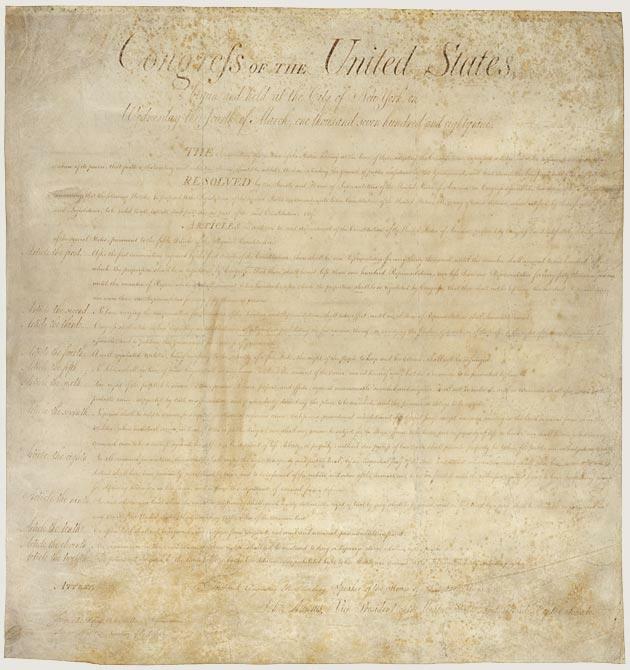Among the significant documents of American history, one of the most honorable ones is the Bill of Rights. This act of civil liberties signed in 1791 on the initiative of James Madison became one of the first pieces of evidence of social democratization (Zink, 2014). Today, the document is kept in the National Archives and is the property of the American people. The provisions introduced in the Bill became additions to the Constitution, which had been adopted earlier, and allowed to achieve the right of citizens to freedom of speech, press, religion, and other important opportunities. The modern history of America has been formed largely due to the Bill of Rights and the people who advocated its signing.
Peculiarities of the Document
The absence of articles guaranteeing civil rights in the text of the US Constitution became one of the main themes of political disagreements. In the first years of the existence of the American state, the government and Congress expected the legal document promised by the Constitutional Convention, which would guarantee the citizens of the country their rights and freedoms. The main of the proposed amendments are reflected in the additions prepared by James Madison and containing guarantees of the rights to freedom (Zink, 2014). As a result, in 1791, an official document was signed, which today is the property of the people and part of history. The Bill of Rights is kept in the National Museum as one of the main historical relics (see Figure 1).

The adoption of the Bill of Rights made it possible to take a significant step in the formation of the democratic system of the new country, which became free from many prejudices. Despite Zink’s (2014) view that the inclusion of amendments to the Constitution was a controversial decision, America’s modern history is inextricably linked to those laws that the act provided. Therefore, its value is large.
Influence of the Bill of Rights on Contemporary Issues
Due to the adopted amendments, the American people received several rights that had not previously been considered and ratified at the state level. The impact of the document on modern government issues is significant. According to MacDonald and McGrath (2016), some of Bill’s provisions were used to compile the United Nations Declaration. Also, the text of the amendments is now taken into account when conducting court cases and is the source to which civil servants refer. MacDonald and McGrath (2016) remark that some decisions made by the judiciary are directly relevant to the act and are key ones in determining human rights.
Today, the government is obliged to take into account those legislative amendments that became part of the Constitution in 1791, and, as MacDonald and McGrath (2016) note, despite many changes in the way of life, the provisions have not changed their relevance. The terms of the Bill cannot be neglected since it is a document of national importance. Therefore, its influence on modern government issues is significant.
Conclusion
The Bill of Rights played a major role in forming the democratic foundations of American society, and its provisions are part of contemporary legislation. The signing of the document is of great importance from the point of view of the judicial system development. The influence of the Bill on modern issues government is indisputable, and the proof is the use of the act’s provisions in the United Nations Declaration.
References
The Bill of Rights [Image]. (2017).
MacDonald, J. A., & McGrath, R. J. (2016). Retrospective congressional oversight and the dynamics of legislative influence over the bureaucracy. Legislative Studies Quarterly, 41(4), 899-934.
Zink, J. R. (2014). James Wilson versus the Bill of Rights: Progress, popular sovereignty, and the Idea of the US Constitution. Political Research Quarterly, 67(2), 253-265.